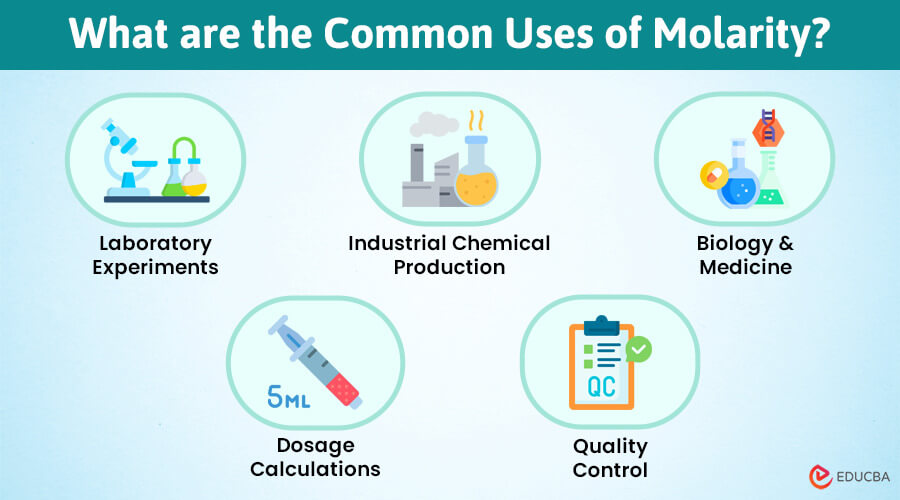
What Is Molarity?
Molarity (M) defines the concentration of a solution by indicating the number of solute moles present in one liter of solution. It provides a way to quantify how much solute is present in a given volume of solvent, making it essential for various chemical calculations and experiments.
When studying chemistry, one important aspect is the concentration of substances in a solution. Instead of trying to count individual particles, which is impractical, we use molarity. Therefore, when chemists discuss the molarity of a solution, they are essentially measuring the number of particles per liter. This allows for precise measurements, ensuring that experiments proceed as planned.
What is a Mole?
A mole is a chemistry unit representing a huge number of particles—6.022 x 1023, to be exact. This number is so big that it lets us go from thinking about individual atoms to amounts we can work on within the lab. So when we say something has a molarity of 1 M, we mean there is 1 mole of solute in every liter of solution.
Importance of Molarity
Here are some key reasons why molarity is important:
- Accuracy in Experiments: Molarity ensures that researchers prepare solutions with precise concentrations, which is crucial for reliable experimental results.
- Impact on Results: Using solutions that are too weak or too strong can lead to failed experiments or unexpected outcomes, making molarity essential for consistent results.
- Calculation of Solute Amount: Molarity allows chemists to accurately calculate the exact amount of solute needed to achieve a desired concentration in a solution.
- Versatility in Applications: Precise molarity is key for effective chemical mixing and reaction optimization, whether in a laboratory setting or scaling up for industrial processes.
- Foundation for Chemical Reactions: Understanding molarity is fundamental for predicting how chemicals will behave in reactions, which is essential for successful experimentation and product development.
How to Calculate Molarity?
There are two effective methods for calculating molarity:
1. Manual Calculation
Calculating molarity manually is straightforward but requires careful attention to detail.
To manually calculate molarity, follow these steps:
- Determine the number of moles of solute.
- Measure the solution’s volume in liters.
- Apply the formula:
Example: Dissolving 1 mole of sodium chloride (NaCl) in sufficient water to create 1 liter of solution, you will obtain a 1 M solution.
2. Using a Molarity Calculator
Manually calculating molarity can be time-consuming, particularly when you’re pressed for time. To streamline the process, you can use an online molarity calculator, which simplifies the task and ensures accuracy.
How it Works:
- Input the mass of the solute and the volume of the solution.
- The calculator handles the calculations for you.
Whether completing homework or conducting an important experiment, a molarity calculator makes the process faster and easier, allowing you to focus on your work.
How to Convert Mass to Moles?
Sometimes, you may have the mass of your solute rather than the number of moles. This is not an issue, as you can easily convert between mass and moles if you know the molar mass (the mass of one mole of the substance). For instance, the molar mass of sodium chloride (NaCl) is 58.44 g/mol. Therefore, if you have 58.44 grams of NaCl, you have 1 mole.
Suppose you want to prepare a solution with 117 grams of NaCl in 2 liters of water. First, convert the mass to moles:
Moles of NaCl = 117 g / 58.44 g/mol = 2 moles
Next, substitute this value into the molarity formula:
M = 2 moles / 2 liters = 1 M
You have successfully created a 1 M solution of NaCl. It is as simple as that!
How Does Molarity Impact Reactant Calculations?
Molarity is super useful when calculating reactants in chemical reactions. For example, in the reaction between HCl (Hydrochloric acid) and NaOH (Sodium hydroxide), if you want to neutralize 1 liter of 0.5 M HCl, you’ll need 1 liter of 0.5 M NaOH. It’s all about matching the moles of each reactant to ensure the reaction goes as planned.
How to Dilute a Solution?
For instance, if you have a 2 M solution and need to dilute it to 1 M, you can use the dilution formula:
Let’s assume you have 1 liter of a 2 M solution and want to dilute it to 1 M. To find the final volume (V₂), solve the equation:
(2 M)(1 liter) = (1 M)(V₂)
Upon solving, you will find that V₂ is 2 liters. This means you need to add 1 liter of water to your original solution to halve the concentration.
What are the Common Uses of Molarity?
Here are some of the few common uses of morality:
- Laboratory Experiments: Molarity is essential for preparing solutions accurately in various lab experiments, ensuring that reactions proceed as expected.
- Industrial Chemical Production: In industrial settings, precise molarity is crucial for large-scale chemical production, impacting efficiency and product quality.
- Biology and Medicine: Molarity is essential in biological applications, such as preparing reagents for experiments and conducting research.
- Dosage Calculations: In medicine, accurate molarity is essential for calculating dosages of IV medications, ensuring patient safety and effective treatment.
- Quality Control: Molarity is used in quality control processes to verify the concentration of solutions in pharmaceuticals and other industries.
Final Thoughts
Molarity is a fundamental concept in chemistry. It allows for precise measurement of concentrations to ensure reactions occur as expected. Whether working in a lab, preparing solutions for an experiment, or scaling up for industrial production, understanding how to calculate molarity and knowing when to apply it provides you with the necessary control to achieve success.
Recommended Articles
We hope this thorough guide on molarity enhances your understanding of solution concentrations. Check out these recommended articles for additional insights and strategies to deepen your chemistry knowledge.
